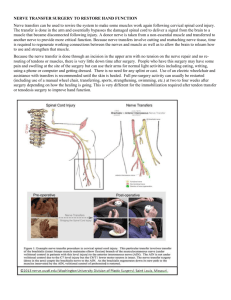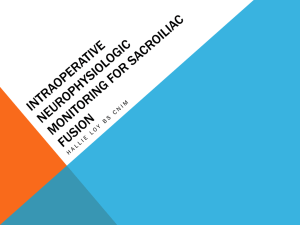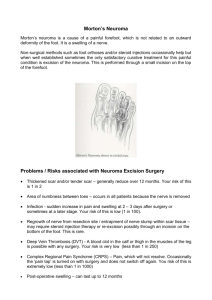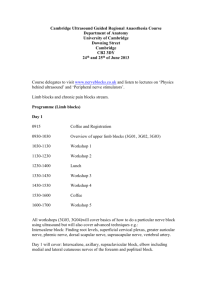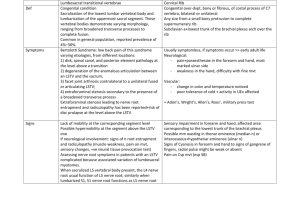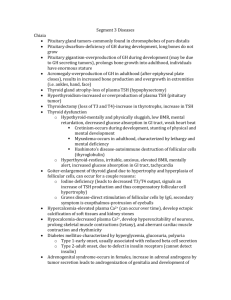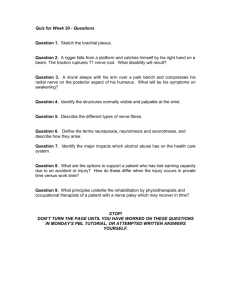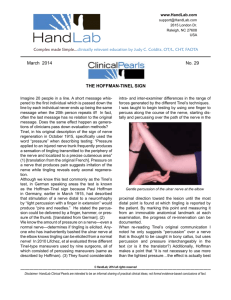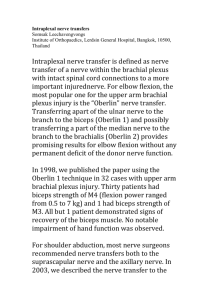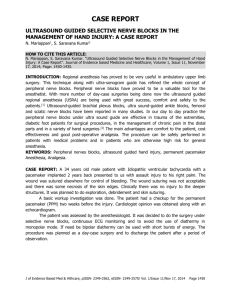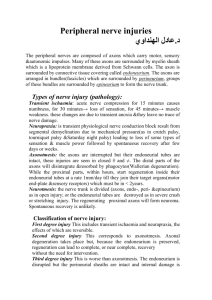File - Angie Farris` Portfolio
advertisement
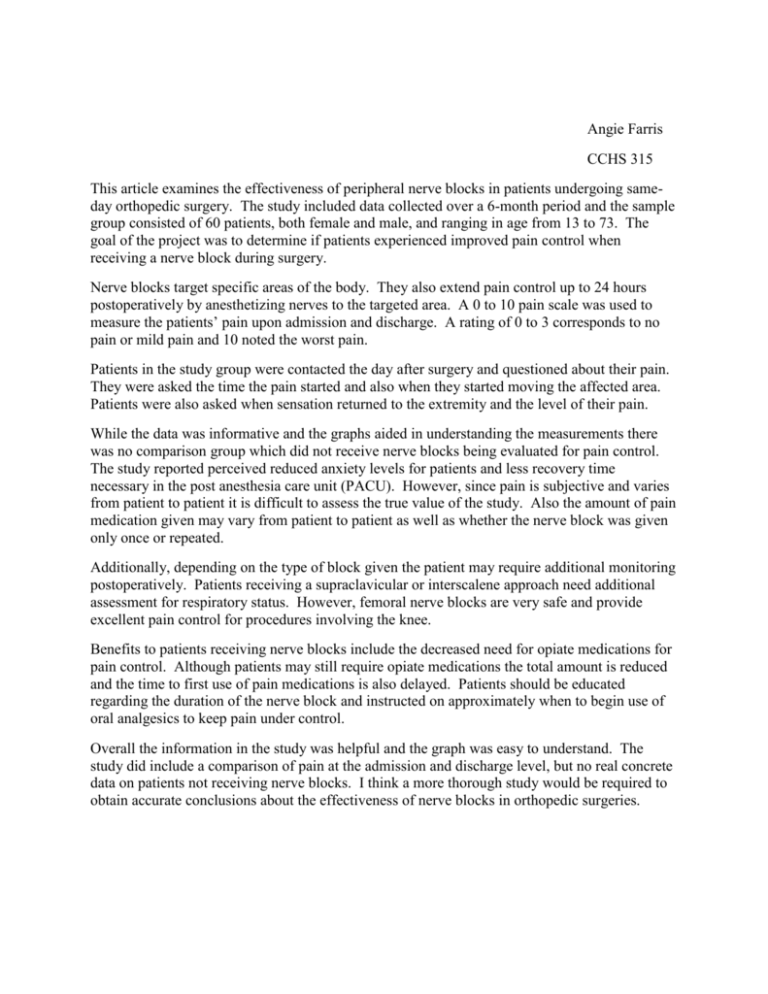
Angie Farris CCHS 315 This article examines the effectiveness of peripheral nerve blocks in patients undergoing sameday orthopedic surgery. The study included data collected over a 6-month period and the sample group consisted of 60 patients, both female and male, and ranging in age from 13 to 73. The goal of the project was to determine if patients experienced improved pain control when receiving a nerve block during surgery. Nerve blocks target specific areas of the body. They also extend pain control up to 24 hours postoperatively by anesthetizing nerves to the targeted area. A 0 to 10 pain scale was used to measure the patients’ pain upon admission and discharge. A rating of 0 to 3 corresponds to no pain or mild pain and 10 noted the worst pain. Patients in the study group were contacted the day after surgery and questioned about their pain. They were asked the time the pain started and also when they started moving the affected area. Patients were also asked when sensation returned to the extremity and the level of their pain. While the data was informative and the graphs aided in understanding the measurements there was no comparison group which did not receive nerve blocks being evaluated for pain control. The study reported perceived reduced anxiety levels for patients and less recovery time necessary in the post anesthesia care unit (PACU). However, since pain is subjective and varies from patient to patient it is difficult to assess the true value of the study. Also the amount of pain medication given may vary from patient to patient as well as whether the nerve block was given only once or repeated. Additionally, depending on the type of block given the patient may require additional monitoring postoperatively. Patients receiving a supraclavicular or interscalene approach need additional assessment for respiratory status. However, femoral nerve blocks are very safe and provide excellent pain control for procedures involving the knee. Benefits to patients receiving nerve blocks include the decreased need for opiate medications for pain control. Although patients may still require opiate medications the total amount is reduced and the time to first use of pain medications is also delayed. Patients should be educated regarding the duration of the nerve block and instructed on approximately when to begin use of oral analgesics to keep pain under control. Overall the information in the study was helpful and the graph was easy to understand. The study did include a comparison of pain at the admission and discharge level, but no real concrete data on patients not receiving nerve blocks. I think a more thorough study would be required to obtain accurate conclusions about the effectiveness of nerve blocks in orthopedic surgeries. Reference Luz, P. (2013, June). How effective are nerve blocks after orthopedic surgery? A quality improvement study. Nursing2013, 43(6), 63-66.


